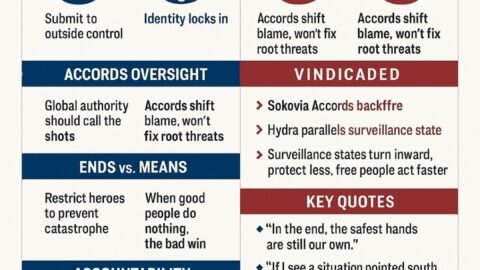Introduction: Barnett’s Framework
Thomas Barnett offered a strategic simulation to anticipate China’s future by 1) its ability to overcome the “middle-income trap” (economic question) and 2) whether its political behavior would turn outward (aggressive) or inward (passive) (political/military question).
He divided China’s future into four scenarios:
- Thinking Man’s South Korea (Escape velocity + inward/passive)
- Angry Man’s Germany (Escape velocity + outward/aggressive)
- Sick Man of Asia (Stuck in middle income + inward/passive)
- Poor Man’s Japan (Stuck in middle income + outward/aggressive)
He explained the drivers as:
- Demographic pressure (aging)
- Innovation capacity
- Political reform vs. entrenchment
- The balance between civilian leadership and military nationalism
- Global engagement (cooperation vs. confrontation)
Now let’s walk through Barnett’s projections compared to today in 2025, and evaluate how close reality aligns with his possibilities.
Economic Evolution — Middle Income Trap vs Escape Velocity
Has China Achieved Escape Velocity?
- Partially.
China’s economy has grown significantly since Barnett’s speech (early 2010s). Its GDP per capita has risen dramatically, moving it into upper-middle income status (~$12,000 GDP per capita as of 2023), but it has not yet crossed into true high-income status like South Korea or Japan. - Structural Barriers:
China’s heavy debt loads (especially municipal debt), real estate dependency (e.g., Evergrande collapse), and a slowing innovation engine suggest it may be stalling. - Aging Population:
Barnett warned about “getting old before getting rich.” Indeed, China now faces population decline (2022 was the first year with net population loss), and median age is increasing faster than most developed countries.
Thus, Barnett’s fear of aging before escaping is now a clear and present danger.
Political Evolution — Outward Aggression vs Inward Passivity
Has China Turned Aggressive or Passive?
- Shift Toward Aggression:
Xi Jinping’s leadership (2012-present) has coincided with a more outward-facing nationalism:- Belt and Road Initiative (BRI): global economic influence expansion
- Military modernization: especially navy and hypersonic weapons
- Wolf warrior diplomacy: aggressive foreign posturing
- Taiwan rhetoric: strong militaristic undertones
- South China Sea militarization: island building and militarization
- Internal Control, Not Liberalization:
Instead of a South Korea-like democratization, China has tightened its authoritarian grip, using AI surveillance, censorship, and harsh political purges (anti-corruption campaigns targeting rivals).
Thus, China increasingly resembles the “Angry Man’s Germany” scenario: achieving partial economic success while growing more nationalist and assertive.
Global Strategic Shifts
Barnett predicted that if China succeeded economically and turned aggressive, it would challenge the US-centric global order, particularly in the Global South.
Present Observations:
- China vs U.S. Rivalry:
The US-China competition has intensified:- Semiconductor wars (export bans, tech decoupling)
- South China Sea confrontations
- Taiwan tensions
- China’s Global South Strategy:
China now dominates infrastructure projects, investments, and diplomacy in Africa, Latin America, and parts of Asia, challenging Western influence. - BRICS Expansion (Brazil, Russia, India, China, South Africa, now including more nations) shows China’s intent to lead an alternative global order.
Current Warning Signs and Risks
Barnett’s “Angry Man’s Germany” scenario warned about:
- Rising hubris
- Militarization to resolve resource dependencies
- Nationalism replacing pragmatic politics
Today, we see:
- Decreased dialogue with the West
- Increased military drills with Russia
- Emphasis on “de-dollarization” (moving away from US dollar dominance)
- Strains within China: youth unemployment over 20%, urban malaise, property market collapse
Thus, China is under internal strain, yet projecting external strength — a classic warning sign of a fragile, aggressive power.
Has Any South Korea-style Transition Happened?
Not yet.
- South Korea in the 80s-90s democratized with a growing middle class demanding accountability.
- In China, despite a massive middle class, political repression has grown.
- The Communist Party’s “Social Credit System” further entrenches obedience rather than rebellion.
Thus, the Thinking Man’s South Korea future seems delayed, if not permanently sidelined — at least under Xi’s rule.
What About the Future (2025–2035)?
Based on the patterns seen:
- Demographic decline will worsen economic stagnation.
- Aggressive nationalism will likely continue to distract the population from domestic problems.
- Financial instability (from real estate and shadow banking) could trigger a domestic or regional crisis.
- A softer transition to democracy looks unlikely unless economic failure becomes undeniable and sustained.
Alternate Possibility:
Should China stumble economically severely (akin to Japan’s “Lost Decades”), there could be a shock to the system forcing internal reforms — but that’s not likely under current political controls.
Conclusion
Barnett’s strategic model proves stunningly prescient:
- Middle Income Trap: China is struggling at the wall.
- Aging Crisis: Confirmed.
- Aggressive Nationalism: Intensifying.
- Global Tension: Escalating.
Today, China stands somewhere between “Angry Man’s Germany” and “Poor Man’s Japan” depending on the depth of its financial and demographic problems in the next 5-10 years.
Barnett’s final point holds: the West must prepare for a China that is aging, powerful, nationalistic, and insecure, which is historically a volatile and dangerous combination.
The outcome is not inevitable, but the window for peaceful integration is narrowing.







